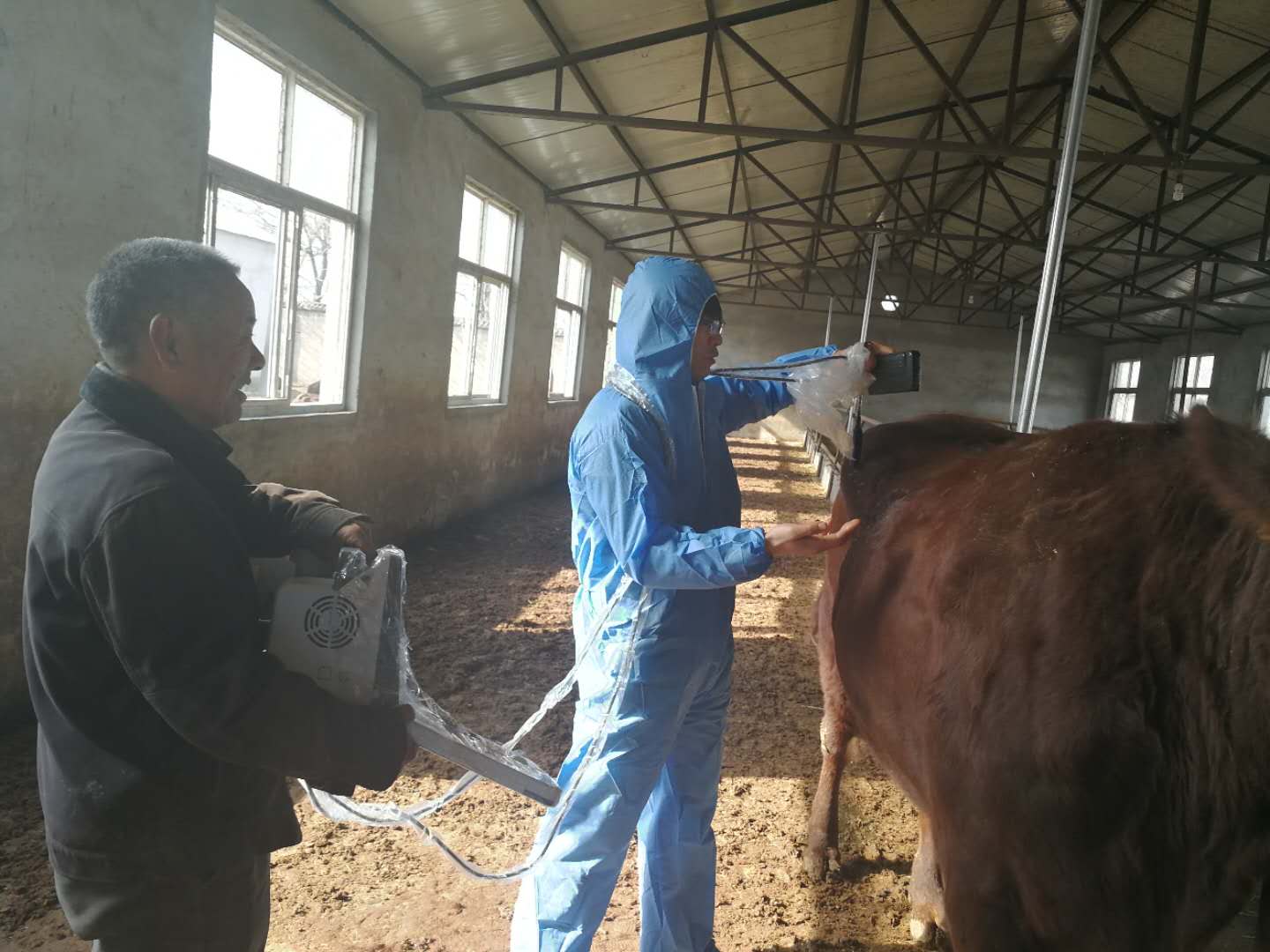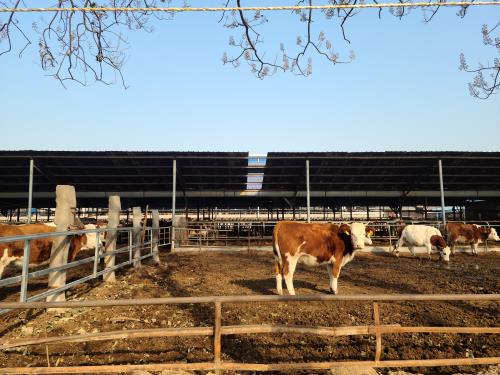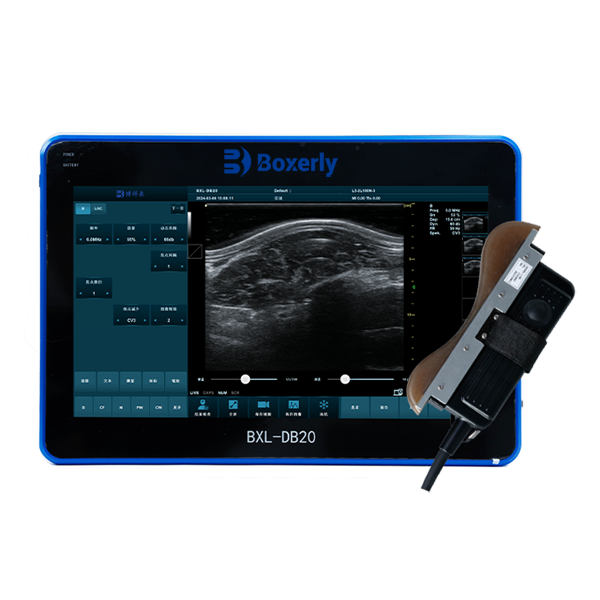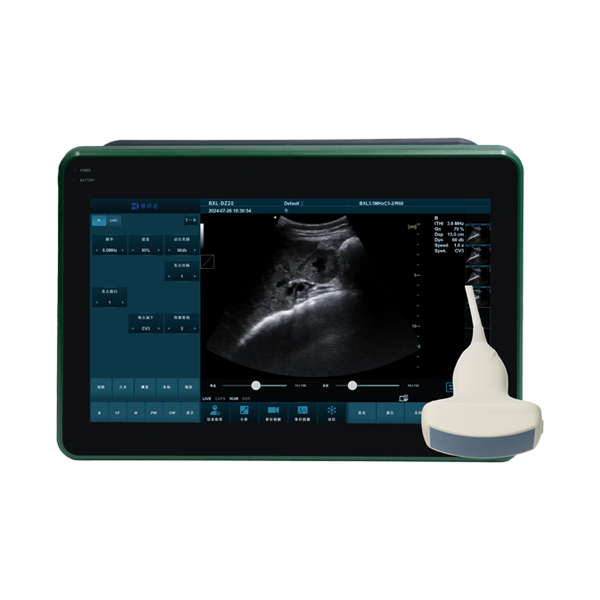The eye muscle area analyzer uses the maximum variance automatic threshold method (OSTU) to remove the black background from the entire beef image based on the R-component grayscale histogram of the beef image. The R-component grayscale histogram of the beef sample, after removing the black background, shows a white background (255, 255, 255) in the image. After removing the image background, it is necessary to segment the muscle and fat areas in the eye muscle section. The fuzzy clustering method based on fuzzy set theory can more effectively improve the accuracy of image segmentation. This study uses fuzzy C-means clustering (FCM) to segment fat and muscle pixels in beef images. After this processing, the muscle pixels are set to black and the fat pixels are set to white. This allows the eye muscle area analyzer to further median filter and fill the resulting image after FCM segmentation.
Eye muscle area measuring instrument for detecting the eye muscle of beef cattle

The segmentation of the longissimus dorsi muscle in the eye muscle section is very difficult due to the adhesion between the longissimus dorsi muscle and the surrounding muscle tissue, which have similar structures and colors. Although the shape of the longissimus dorsi muscle in the beef eye muscle section is irregular and varies greatly in size, some structural characteristics can be summarized through the analysis of the eye muscle area measuring instrument: the longissimus dorsi muscle has the largest area among all structures, and its structure is generally similar to an ellipse; However, excess fat (not long back muscle tissue) is relatively small in circumference and area, and is separated or "bridged" with the long back muscle. If the iterative corrosion operation in mathematical morphology is used, these "bridges" can be corroded away. If a "circular" structural element is repeatedly corroded, not only can the "bridges" be corroded, but also the excess fat tissue will be eliminated one by one in order of area from small to large. The longissimus dorsi muscle will be the last tissue to be completely corroded. Therefore, when there is only one area left in the entire beef image (the area disappears after further operation), the circular structural elements at this time are the structural elements that can find the largest area in the image. This circular structural element can be used to expand and corrode the area, resulting in the dorsal longus muscle region. After the above segmentation steps, the eye muscle area measuring instrument can further extract the marble pattern (which is the fat in the beef dorsal longus muscle) from the beef dorsal longus muscle. The YLD image obtained by morphological manipulation can be combined with the preprocessed beef image X to obtain the XLD image of the longissimus dorsi muscle, which contains marble pattern information.









